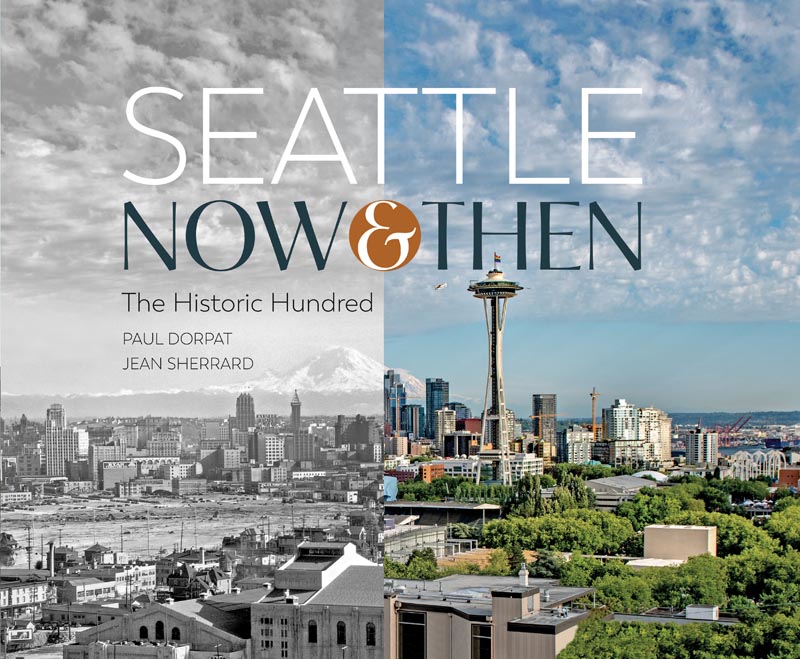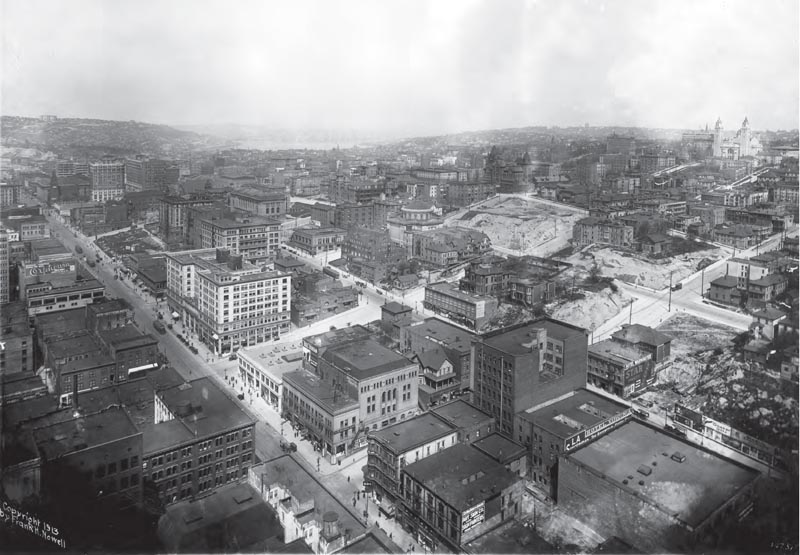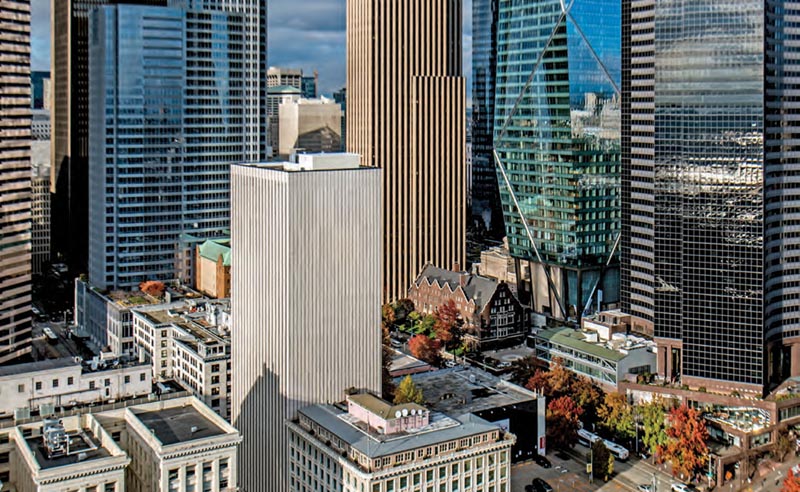Book review: Seattle Then and Now

The cover art of Seattle Now & Then by Paul Dorpat with photography by Jean Sherrard.
By Cathy Wickwire, Operations Manager
Readers of the new book, Seattle Now & Then: The Historic Hundred (Documentary Media, 244 pages, $49.95) will see the culmination of a lifetime of work by author Paul Dorpat. The book follows a familiar format first introduced in his long-running Seattle Times column: show a historic photo paired with a recent image that attempts to recreate the same view from the same location. The “Now” photos are beautifully composed by Dorpat’s more recent sidekick, photographer Jean Sherrard, but they take a back seat to the rich detail and almost exotic imagery of the “Then” photos. However, as intended, they serve as a helpful guide to unlock the past.
In 100 such pairings, the book celebrates the topographical and architectural changes over almost 170 years of Seattle history as it tells our city’s stories. For Dorpat, it’s always about the story, which helps bring the past alive. Through these stories, the book not only documents our history and industry but also reminds us of all that makes our city what it is today. This includes telling the story whenever possible of the Native Americans who made this area their home for millennia before European American settlers arrived in the mid-19th century.
The book serves as a touchstone for longtime residents but also a guide for newcomers, even those who may plan to stay only a few years. Many of the historic photos are readily available while others are rare finds from Dorpat’s collection, but it’s worth buying the book to have them all together. It’s also worth spending time with the book and taking a deep dive into its pages in what becomes a guided meditation on our past and present.
A quick perusal can elicit an initial reaction of surprise at all the changes that have occurred over the years. Pioneer homes once stood where today’s skyscrapers now rise, and nondescript parking lots or freeway overpasses reveal themselves to be the site of some past architectural treasure. Thankfully, the book roots the present in a landscape often from the unrecognizable past, especially photos of long gone hills that were sluiced into Elliott Bay in the name of progress. In Seattle, we see that we not only took hills away but made new land with them on former tide flats and at the base of bluffs that lined our shores. Despite these epic transformations, the contours of the remaining hills and the waters are familiar even in the early photos of a sparsely settled Seattle.
A closer look shows how much remains. For lovers of old buildings, each set of photos is a search for something familiar that resides in both. Panoramic photos in particular become a “Where’s Waldo?” game, and players are rewarded with new views of old friends, some of whom are no longer with us. Finding those survivors brings the past into the present with the extant buildings that remain. What also becomes apparent is that buildings that look old to us today are themselves the second, third or even fourth structure on the site with only their older neighbors to guide us in the historic photos. Every generation thinks that the change going on in the present is greater than any in the past. This book stands testament to the fact that change has always been present in Seattle. It also demonstrates the importance of managing that change so that we can still glimpse familiar friends in old photos. More than anything, our efforts as preservationists and the love people have for buildings all over the city stand out, especially as the book also celebrates the survival of local landmarks such as West Seattle’s beloved Admiral Theatre.


Two views of downtown Seattle, both taken from similar vantage points high in the Smith Tower. The historic photo is from 1913, just as the tower was being completed, and the modern view was taken in 2017 by Jean Sherrard.
